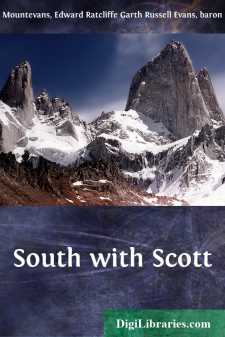Categories
- Antiques & Collectibles 13
- Architecture 36
- Art 48
- Bibles 22
- Biography & Autobiography 813
- Body, Mind & Spirit 142
- Business & Economics 28
- Children's Books 14
- Children's Fiction 11
- Computers 4
- Cooking 94
- Crafts & Hobbies 4
- Drama 346
- Education 46
- Family & Relationships 57
- Fiction 11829
- Games 19
- Gardening 17
- Health & Fitness 34
- History 1377
- House & Home 1
- Humor 147
- Juvenile Fiction 1873
- Juvenile Nonfiction 202
- Language Arts & Disciplines 88
- Law 16
- Literary Collections 686
- Literary Criticism 179
- Mathematics 13
- Medical 41
- Music 40
- Nature 179
- Non-Classifiable 1768
- Performing Arts 7
- Periodicals 1453
- Philosophy 64
- Photography 2
- Poetry 896
- Political Science 203
- Psychology 42
- Reference 154
- Religion 513
- Science 126
- Self-Help 84
- Social Science 81
- Sports & Recreation 34
- Study Aids 3
- Technology & Engineering 59
- Transportation 23
- Travel 463
- True Crime 29
South with Scott
Categories:
Description:
Excerpt
CHAPTER I
SOUTH POLAR EXPEDITION—OUTFIT AND AIMS
It is nine years since the last supporting party bid farewell to Captain Scott and his four brave companions, whose names are still fresh in the memory of those who were interested in Captain Scott's last Polar Expedition. The Great War has come and gone and the majority of us wish to forget it, but the story of Scott undoubtedly appeals still to a great number of people. It is a good story, and my only hope is that I can retell it well enough to make my volume worth while reading after so much has already been published concerning the work of the British Antarctic Expedition of 1910.
The main object of our expedition was to reach the South Pole and secure for the British nation the honour of that achievement, but the attainment of the Pole was far from being the only object in view, for Scott intended to extend his former discoveries and bring back a rich harvest of scientific results. Certainly no expedition ever left our shores with a more ambitious scientific programme, nor was any enterprise of this description ever undertaken by a more enthusiastic and determined personnel. We should never have collected our expeditionary funds merely from the scientific point of view; in fact, many of our largest supporters cared not one iota for science, but the idea of the Polar adventure captured their interest. On the other hand, a number of our supporters affected a contempt for the Polar dash and only interested themselves in the question of advanced scientific study in the Antarctic. As the expedition progressed, however, the most unenthusiastic member of the company developed the serious taste, and in no case did we ever hear from the scientific staff complaints that the Naval members failed to help them in their work with a zeal that was quite unexpected. This applies more particularly to the seamen and stokers.
Captain Scott originally intended to make his winter quarters in King Edward VII. Land, but altered the arrangement after the fullest discussion with his scientific friends and advisers, and planned that a small party of six should examine this part of the Antarctic and follow the coast southward from its junction with the Great Ice Barrier, penetrating as far south as they were able, surveying geographically and geologically. This part of the programme was never carried out, owing to the ice conditions thereabouts preventing a landing either on the Barrier or in King Edward VII. Land itself.
The main western party Scott planned to command himself, the base to be at Cape Crozier or in McMurdo Sound, near the site of the "Discovery's" old winter quarters at Cape Armitage, the exact position to be governed by the ice conditions on arrival.
Dogs, ponies, motor sledges and man-hauling parties on ski were to perform the Polar journey by a system of relays or supporting parties. Scott's old comrade, Dr. E.A. Wilson of Cheltenham, was selected as chief of the scientific staff and to act as artist to the expedition....


